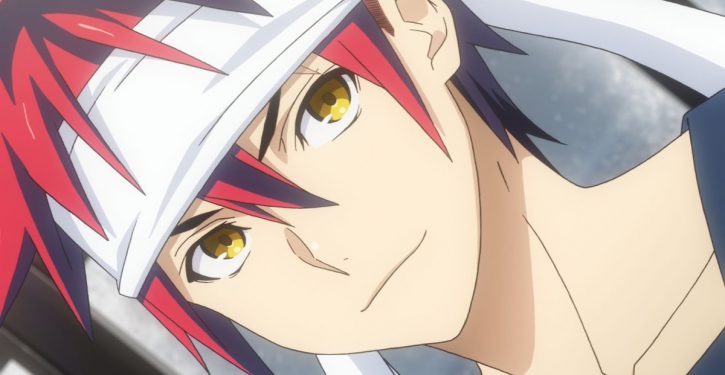Food, being a commonplace aspect of daily life and a necessity for survival, will almost always feature in one form or another in nearly all stories. They can be divided into two categories: there’s normal food, which are really just eaten for sustenance, and then there’s the mouth-watering, beautifully presented, gloriously appetizing food that make you wish you can eat things through your screen. This article is about that second group.
Shokugeki no Soma

©附田祐斗・佐伯俊/集英社・遠月学園動画研究会餐
In an age where food is obsessed over more than ever, it’s no surprise that a show like Shokugeki no Soma, an anime that is basically food porn has entered the mainstream. People who have seen even the first episode will know what I mean when I say that this anime won’t just knock your socks off, it’ll quite literally air bazooka your clothes right off.

©附田祐斗・佐伯俊/集英社・遠月学園動画研究会餐
As a show centered on cooking, it’s obvious how much care and effort goes into the food art of this show. Each dish that appears in the manga series by Yuto Tsukuda and Shun Saeki are beautifully rendered with vibrant colors and fantastic expression of texture. Just as impressive as the representation of these foods themselves is the breadth of ingredients and dishes themselves. The inclusion of some more specialized ingredients such as kusaya, tempeh, and turtle to name a few adds a lot of appeal for those with an interest in cuisine.
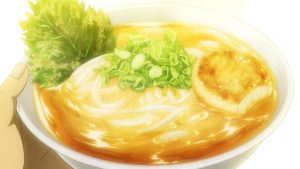
©附田祐斗・佐伯俊/集英社・遠月学園動画研究会餐
But to simply say that the success of this anime is based solely on the popularity of food in popular culture wouldn’t be giving it enough credit. Shokugeki no Soma brings together some of the most successful elements of preceding cooking shows and elevates them to levels never seen before. The shokugeki, or cooking battles, are a common element already present in several series, such as Yumeiro Patissiere, Cooking Master Boy, and even non-animated shows like Iron Chef. The reactions on the other hand may be inspired by not only the hilarious Yakitate Japan, but also the extremely exaggerated reactions present in Japanese comedy. To put impeccable food animation on top of these already great elements, it’s not hard to see why it’s such a huge hit.
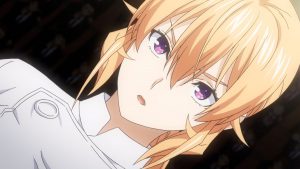
©附田祐斗・佐伯俊/集英社・遠月学園動画研究会餐
Finally, let’s break the show down to it’s story, characters, and sound design. In the story sector, Shokugeki no Soma never really tries to dive into brooding, deeper story themes. A simple mix of cooking and school life with shokugeki and cooking tournaments sprinkled in, while not exactly plot-heavy, provide a way to get from battle to battle which is the real point of the anime. Next are the characters of the Tootsuki Academy who are, thankfully, as varied and interesting as the foods they create. But as aforementioned, the story, characters, and sound are able to provide enough support for the titular Shokugeki where the creators can really showcase food and the people who make and eat it.
Isekai Shokudo

©犬塚惇平・主婦の友社/「異世界食堂」製作委員会
The restaurant that serves as the main stage for Isekai Shokudo, the Nekoya, doesn’t look terribly unusual or special―apart from the quaint entrance, featuring an image of a cat with a label bearing the name of the restaurant, the row of counter seats and small tables filling the average and plain interior as well as its familiar menu might even qualify it as “nondescript”. As far as restaurants in Japan go, it’s definitely the type that you can find in dozens practically anywhere.
But as the title implies, this almost painfully ordinary establishment hides a unique secret: on every Saturday, when the restaurant takes its weekly day off, it transforms into a restaurant frequented by customers hailing from another world, who access it by passing through interdimensional doors.
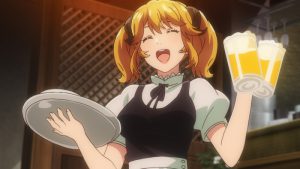
©犬塚惇平・主婦の友社/「異世界食堂」製作委員会
The restaurant is run by its owner, only known as “Master”. Having inherited the place from his grandparents, who first started the business together a few decades ago, this middle aged man in a chef’s uniform is both outstandingly talented at cooking as well as level-minded―two skills he absolutely needed to deal with the colorful cast of otherworldly characters who come and go from his shop, who hail from all walks of life, age groups, and even races. With customers that range from adventurers, warriors, or nobility that may also be demons, elves, fairies, sirens, or even dragons, the mood at the restaurant is sometimes rowdy but never boring.
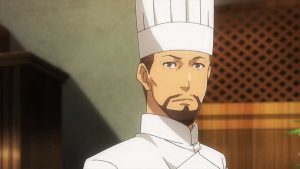
©犬塚惇平・主婦の友社/「異世界食堂」製作委員会
Isekai Shokudo’s premise looks like a blend of the gourmet and fantasy genres, both familiar mainstays in anime and manga, but at its core it has a very strong slice-of-life flavor as well. Devoid of high-tension cook-offs or world-ending catastrophes of epic proportions, this title instead puts its weight on the charms of the ordinary life: though the guests come from all kinds of circumstances, quite a few with their own load of hardships, the Nekoya appears to them as a rest stop of sorts, a place to sit down and just have a hearty meal. Here the restaurant’s menu, otherwise unimpressive and commonplace, gets a strange chance to shine. The main dishes of each episode―beef stew, minced meat cutlet, fried shrimp, omelette rice, to name a few―are nigh ubiquitous in Japan, but by that virtue they have about them a comfortable familiarity that does wonders to enhance the pleasant, almost idyllic atmosphere the Nekoya has. Highlighting the beauty of the ordinary seems to be Isekai Shokudo’s purpose, and sometimes humor is used to this effect―owing to their background, the guests that come to the Nekoya see these everyday dishes as exotic treats, which can be a source of amusement for the viewer, but is also an opportunity to take a look at the dishes in a different light.

©犬塚惇平・主婦の友社/「異世界食堂」製作委員会
While the fantasy part of this title often keeps itself in the background, its colors are still very visible on the customers, whose stories often revolve around what their dish of choice means to them, and how it ties back to their cultures back at home.
If you’re looking for something heartwarming but prefer a light seasoning of the fantastic to it, Isekai Shokudou may well be worth a look.

